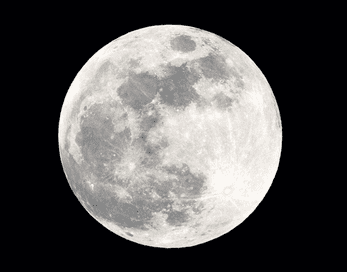Does this the sun set in the west and rise in the east? That seems too simple a question to even merit an answer. But let's look closer at two panoramic photos.
Here are two panoramics of the recent "Blue Moon" at the end of July. Both show the rising blue moon and the setting sun. One was taken from a boat in Maine and one on the coast of Massachusetts. One photo has the moon rising on the right and the sun setting on the left edge of the picture. The other has the opposite arrangement.
Yet the angle between the sun and moon seems a little different in the two pictures. The north-facing photo (the top one) seems to show a smaller angle. Why is that?
The reason lies in the bearing to the sun at sunset and sunrise — the sun's rising and setting position actually changes over the course of the year due to the earth's axial tilt. In the summer (in the northern hemisphere), the sun rises not due east, but north of east. And it sets not due west but north of west. In the winter, the sun rises south of east and sets south of west. Only on two days of the year — the spring and fall equinoxes — does it rise due east and set due west.
And these two photos subtly demonstrate this. In the photo from the boat, the photographer (Joey Lodato) was facing north and had the sunset on his left, moon on the right. In the land photo I was facing south when I took the picture and had the sun on my right, moon on my left. Note that the angle between the sun and moon in the north-facing shot (top) is smaller than the angle in the south-facing shot (at bottom). This is because the sun and moon were north of east and west, making a smaller angle between them for someone facing north. This effect would be even more pronounced were the photos taken on June 21st.

